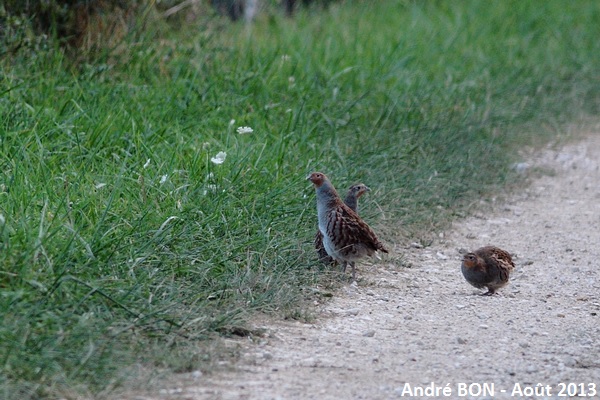

| Grey Partridge (Perdix perdix (Linnaeus, 1758)) |


|
|
Scientific name: Perdix perdix (Linnaeus, 1758) Common name: Grey Partridge Other names: English Partridge, Hungarian Partridge French name: Perdrix grise Order: Galliformes Family: Phasianidae Size: Body size: 28 to 32 cm; Weight: 310 to 570 g ; Wingspan: 45 to 48 cm. Habitat: Open plains, cultivate areas, steppes with hedgerows and bushes, mountain areas. Food: Plants, fruits, buds and seeds but also insects and earth worms. Nesting: Grey Partridges nest on the ground in a depression hidden under vegetation. There are 9 to 20 eggs per clutch. Hatching out occurs in June or early July. There may be second brood in summer. Migration: Sedentary, mountain populations may move on short distances depending on snow cover. Geographic area: Europe, Asia, introduced to the United States of America and to Canada. |
The Grey Partridge has a rounded body. The upper side of the plumage is brown and grey. The underside is grey with a dark reddish brown horseshoe-shaped patch on the lower part of the chest. The head is orange to brown orange, the cap is grey. The whitish bill is slightly hooked. Females are a duller colour than males. They often miss the reddish brown patch on the chest. The Grey Partridge is a game for hunters but its population has declined because of the changes in agricultural practices and the modifications of landscapes to more intensive production and crops without hedgerows or bushes. |
| [To know more about the Grey Partridge] [Next picture] [Top] |

|
Here is one part of the clutch. The other Partridges are already gone to hide among high grasses. |
| [To know more about the Grey Partridge] [Previous picture] [Top] |

|
How to say to this Partridge that I am only hunting in order to shoot … pictures? |